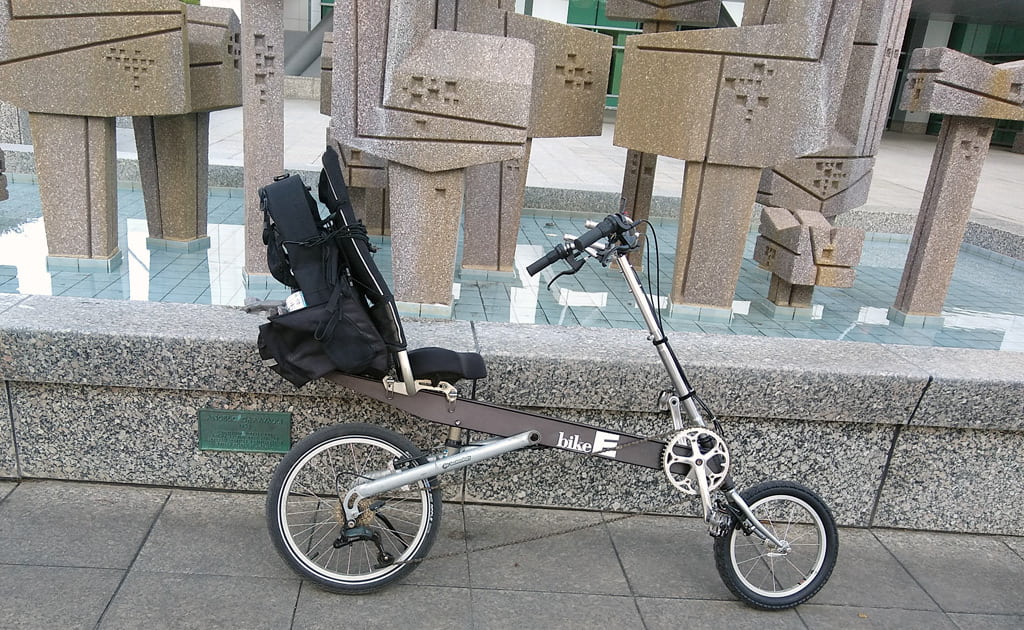999zip999
100 TW
What kind of brakes and brake pads do you have on that thing do you have a shifting Hub in the rear ?
niwrad said:I would go with suspension is not as needed depending on the rider and ability to navigate around potholes and ability to stand and flex both knees and elbows over potholes.
Balmorhea said:Small diameter wheels have serious trade-offs in ride quality, traction, and safety that mechanical suspension can't compensate for. Being able to stand up on the pedals is one of the characteristics that makes a bicycle feasible on real world surfaces.
john61ct said:Are these Dutch designs available in the States?
Especially need heavy weight bearing?
Would also like to look at cargo / delivery type.
spinningmagnets said:My most-ridden ebike is an Electra cruiser. I trimmed an inch off of the top of the seat-tube, and then switched to a Suntour NCX, which us shorter than the Thudbuster by one inch.
I liked the long-travel Thudbuster (LT), but it was a bit tall. I would have gladly kept it if there were no other options, but I do like the extra two inches, with my feet flat on the ground.
ScooterMan101 said:https://yubabikes.com/
john61ct said:Are these Dutch designs available in the States?
Especially need heavy weight bearing?
Would also like to look at cargo / delivery type.
To add to this, there have been many times when I've been riding on sunny days while wearing sunglasses only to suddenly ride into a shaded area and finding myself momentarily unable to see the details of the surface in front of me. Twice this year I've hit obstructions I never saw coming. One was a large glass bottle, another was a sizable potato of a rock. Both were on paved multi use paths. I wasn't going particularly fast either time, probably around 20kph, and both times my FS bike plowed over them with little more than a thump. Had I been on a rigid bike I can guarantee things would have gotten much harrier. The rock especially would have ruined my day, and probably my bike if I was riding my rigid one.neptronix said:niwrad said:I would go with suspension is not as needed depending on the rider and ability to navigate around potholes and ability to stand and flex both knees and elbows over potholes.
The faster you go, the harder it is to play 'human suspension' and 'pothole/uneven surface watcher'. This really takes a lot of fun out of riding a bike. Imagine if people had to do this in cars?
Where i live, the road surface is almost never smooth; staring at the road and predicting which path will be more comfortable is a futile effort. I noticed that beyond 20mph, an upright bike without suspension gets so jittery and uncomfortable that i personally wouldn't ride one.
It's amazing what suspension will do for you. I had this folder with crappy spring suspension and 20 inch wheels and it had a slightly better ride quality than an unsuspended 29er. Until you hit a curb, of course :lol:
OK thanks.khorse said:ScooterMan101 said:https://yubabikes.com/
john61ct said:Are these Dutch designs available in the States?
Especially need heavy weight bearing?
Would also like to look at cargo / delivery type.
Those are all longtail cargo bikes, we don't have that stuff here in the netherlands.
If you want to buy a real dutch brand, Gazelle, Batavus etc are sold worldwide. I don't think they're very good candidates for ebike conversion because they mostly have pressfit bottom brackets and internal gear hubs.
john61ct said:...find a good Chinese titanium builder.
john61ct said:OK thanks.
I'm thinking for lower-cost, old-school steel 60-70's tandem frame for experimenting?
Once defined exactly what I want, all the drivetrain & braking stuff working, get a CAD design spec'd for a custom build, find a good Chinese titanium builder.
john61ct said:Once defined exactly what I want, all the drivetrain & braking stuff working, get a CAD design spec'd for a custom build, find a good Chinese titanium builder.
Hey Nep. Is that your bike-eneptronix said:I ride semi recumbents these days after starting out on MTB frames. I can't go back. They're both more efficient because of the aerodynamic advantage, and dramatically more comfortable. Add a motor on, and you've negated the disadvantage in riding one uphill.
I don't understand why uprights are still popular. A full suspension lawnchair on wheels is where it's at


spinningmagnets said:My most-ridden ebike is an Electra cruiser. I trimmed an inch off of the top of the seat-tube, and then switched to a Suntour NCX, which is shorter than the Thudbuster by one inch.
I liked the long-travel Thudbuster (LT), but it was a bit tall. I would have gladly kept it if there were no other options, but I do like the extra two inches, with my feet flat on the ground.
bhtooefr said:Recumbents can have larger diameter wheels, too, although with some major tradeoffs that come to mind which affect the general usability as a bicycle:
How tall are you and what's your weight?
